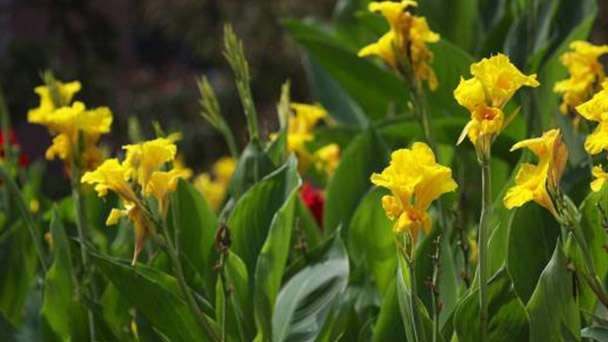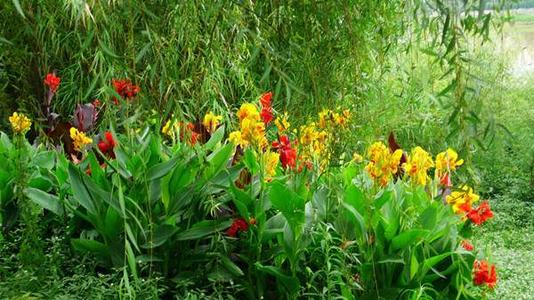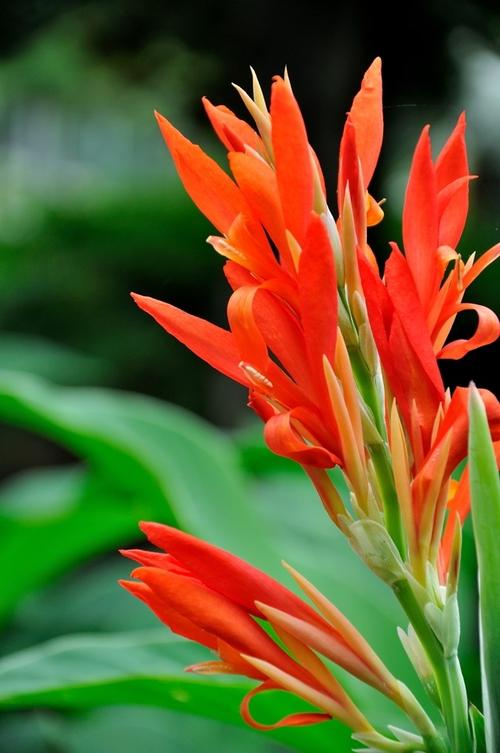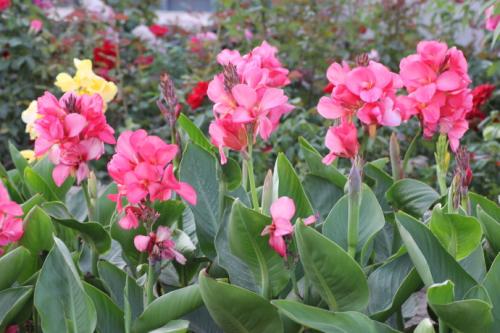Canna generalis profile
Written by Maggie
Nov 12 2020

Canna generalis is a perennial herb, plant height can reach 100 cm-150 cm, rhizomes are hypertrophy with massive underground stems; leaves are large, spirally arranged, with obvious midribs and pinnate parallel veins, petioles are sheath-like stalks, without Leaf tongue and petiole are round, green or purplish red; stems and leaves are white powder, and leaves are broad oval. The flowers are larger, up to 20 cm in size, with straight petals and 4 petalized stamens. The flower colors are milky white, yellow, orange, pink, red to purple.
Canna generalis is native to tropical America. Like high temperature and hot, full sun. The fertile soil is the most suitable. Humidity resistant, but avoid water. Afraid of strong winds and not cold resistant. In the middle and lower reaches of the Yangtze River, the upper ground withered in winter, and the underground rhizomes can survive the winter in the open. Horticultural hybrids, commonly cultivated throughout China.
Canna generalis picture

Morphological characteristics
Canna generalis is about 1.5 meters tall, and its stems, leaves and inflorescences are white powdered. The leaves are oval, up to 40 cm long and 20 cm wide, with purple leaf margins and sheaths. The raceme is terminal, 15-30 cm long (including the total pedicel); the flowers are large and dense, with 2-1 flowers in each bract; the sepals are lanceolate, 1.5-3 cm long; the corolla tube is 5 -10 mm, corolla lobes lanceolate, 4.5-6.5 cm long; outer ring staminodes 3, obovate spoon-shaped, 5-10 cm long, 2-5 cm wide, various colors: red, orange, light yellow, Both are white; the labial petals are obovate and spoon-shaped, about 4.5 cm long and 1.2-4 cm wide; the developing stamens are lanceolate, about 4 cm long and 2.5 cm wide; the ovary is spherical, 4-8 mm in diameter; style band Shape, the free part is 3.5 cm long. Flowering period: autumn.
Origin distribution
Canna generalis is the general name of French Canna, which is mainly derived from the hybridization of the original species Canna generalis, which is distributed in tropical America. Widely cultivated throughout China.

Growth habit
Canna generalis likes warm and humid climate, not tolerant to frost, suitable for growth temperature 25-30℃, likes sunny, fertile soil, no dormancy in the place of origin, annual growth and flowering; strong sex, strong adaptability, almost no choice of soil, moist Loose fertile sandy loam is better, slightly resistant to water and humidity. Fear of strong winds. Planted after frost in spring from April to May, after germination, the top of the stem forms flower buds, and the florets open from bottom to top. During the growing season, the rhizomes germinate one after another to form new stems and bloom. From June to before frost, they bloom continuously and the total flowering period is long. The rhizome can survive the winter in the area south of the Yangtze River, and the north of the Yangtze River must be protected through the winter artificially.
Canna generalis is not cold resistant and is afraid of strong winds and frost. Lax requirements on the soil, can tolerate barrenness, and grow well in fertile, moist, and well-drained soil. After the plants withered in late autumn, cut off the above-ground parts, dig out the rhizomes, dry them in the sun for 2-3 days, and bury them in well-ventilated sandy soil in the greenhouse. Do not water them. Keep them above 5°C to survive the winter safely.
Reproduction method
sowing
From April to May, cut the hard seed coats of canna generalis seeds with sharp tools, soak the seeds in warm water for a day and night, and sown them in the open field. The buds will emerge 2-3 weeks after sowing, and they will be transplanted once when 2-3 leaves are grown. They will bloom in the same year or the following year.
Tuber
Tuber propagation takes place in March-April. Dig out the old rhizomes of Canna generalis and divide them into blocks. Each rhizome retains 2-3 buds with roots. Plant it in the soil about 10 cm deep and keep the plant spacing between 40-50 cm. can. When the new shoots grow to 5-6 leaves, apply a decomposed fertilizer once and they can bloom in the same year.

Latest Updated
- Benefits of Bugleweed - 7 Science-backed Health Benefits
- Bugleweed Dangers & Side Effects - Is It Poisonous?
- How to Plant Evergreen Trees - What You Should Know
- When to Plant Evergreens - Grow Guide for Evergreen Trees
- 12 Wonderful Evergreen Shrubs for Your Garden
- 12 Popular Evergreen Plants with Pictures for Beginners
- When And How To Prune A Lilac Bush Like a Pro
- How to Grow & Care for Lilac Vine (Hardenbergia Violacea)
- Japanese Lilac Tree (Syringa Reticulata) Care & Propagation Guide
- Shumard Oak Pros and Cons - What to Know
Popular Articles
- Winter maintenance of Antirrhinum Majus
- How to Grow Terminalia Mantaly Tree
- How to Grow and Care for Crossostephium Chinense
- How to grow Antirrhinum Majus in spring
- Peristeria Elata (Dove Orchid) Profile: Info & Care Guide
- Underwatered Snake Plant (Sansevieria Trifasciata) - Signs And How To Fix
- How to Care for Brazilian Jasmine Plant (Mandevilla Sanderi)
- How to Grow & Care for Graptopetalum Purple Delight in Summer
- Rosa Chinensis (China Rose): Plant Growing & Care Tips
- How to Care for Baby Sun Rose (Aptenia Cordifolia)